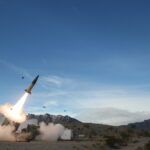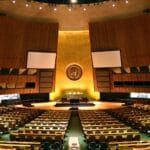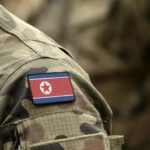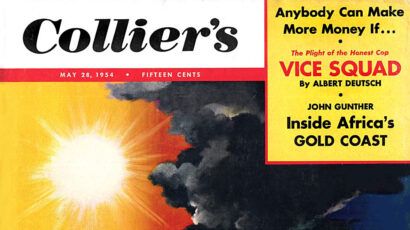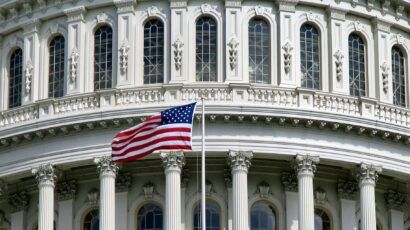Could less be more?
By Fissile Materials Working Group | April 25, 2012
The outcome of the 2012 Nuclear Security Summit left a lot to be desired, and much remains to be done to minimize the nuclear and radiological terrorism risk. But the Seoul communiqué along with the “house gifts” and “gift baskets” — financial and actionable pledges from willing nations to improve nuclear security — are still remarkable achievements given the challenges involved in getting 53 states to take concrete steps and pass a consensus agreement.
World leaders agreed on 18 actions in 11 nuclear security priority areas on everything from increasing material security to reinforcing the role of the International Atomic Energy Agency (IAEA) to strengthening training, security culture, and information protection. The Seoul communiqué updates the 2010 communiqué and work plan but also adds new technical and incremental agreements. Fewer voluntary commitments were made this year compared with 2010, but the 2012 moments of consensus are noteworthy nevertheless.
Important new agreements in the communiqué include a target date to bring the crucial 2005 Amendment to the Convention on the Physical Protection of Nuclear Material into force, specific actions to increase the security of radioactive sources, and an accord to minimize the use of bomb-suitable highly enriched uranium in civilian applications — an agreement that proved especially tricky to reach. States will now announce voluntary actions to minimize highly enriched uranium use by 2013 — if it is economically feasible, if the supply of medical isotope is guaranteed, and if states feel in a position to do so. A genuine commitment to put global security concerns over commercial incentives would surely look very different, but at least the expectation and some pressure to minimize highly enriched uranium use is on record. Finally, a somewhat overlooked new outcome of the summit is the affirmation of the “need to maintain effective emergency preparedness, response and mitigation capabilities in a manner that addresses both nuclear security and nuclear safety.” Much potential remains for sharing best practices and capacities in the areas of emergency response, risk communication, and decontamination. This affirmation is at least a good indicator.
Barriers to fundamental reform. Despite these successes, the Dutch administration — host of the 2014 Nuclear Security Summit — faces greater challenges than simply marking an endpoint to President Obama’s 2010 call to secure all vulnerable nuclear material in four years. Another recast of the 2010 outcomes with a few extras will no longer be worth 58 world leaders’ time. A third (and most likely final) Nuclear Security Summit offers an opportunity to create an especially worthy end to the summit series by achieving a sustainable result. Of course, the most desirable outcome would be the replacement of the nuclear security architecture with a new, comprehensive, and stronger framework. Ideally, this outcome would include the introduction of a mandatory minimum standard of nuclear material security for all states (like the IAEA’s recommendations in The Physical Protection of Nuclear Material and Nuclear Facilities).
However, prospects for such fundamental reform remain dim, as there are a number of reasons why a majority of states are quite satisfied with the current nuclear security framework — and all its imperfections. First, there is a strong interest to keep nuclear security primarily a national responsibility, given that it is entangled with law enforcement and access to sensitive information, especially when it comes to identifying vulnerabilities. Second, after two summits, states still have very uneven threat assessments. As long as there remains no known case where terrorists have come close to building an improvised nuclear device, the variable threat assessments will remain a major barrier to improving the nuclear security framework on a global basis. Third, many states, including those in the Non-Aligned Movement, are unlikely to back strict international nuclear security legislation championed by a minority coalition of more powerful states — either because of political mistrust or a concern that tighter nuclear security provisions will make it harder to exploit peaceful uses of nuclear power.
In short, it is not without reason that the nuclear security architecture developed with gaps and limitations over the course of several decades. Hence, barriers to framework modification are likely to remain in place beyond a 2014 summit. That does not mean, however, that it is not worth gauging potential for fundamental reform, but it is important to take these hurdles into account from the start.
Smaller, more attainable steps. As the preparatory progress of the 2014 summit begins, it is vital to consider more realistic and attainable results rather than broad symbolic calls to action.
1. On-the-ground impact. Steps taken on the ground to improve physical protection of nuclear materials have the most direct effect on nuclear and radiological terrorism risk reduction. Such concrete measures should be encouraged and kept track of beyond 2014 through a unified reporting and benchmarking process — like the 48 national reports submitted to the 2012 summit or the Nuclear Threat Initiative Index, which identifies countries where nuclear security is most in need of improvement. The NGO community could target these countries for cooperative security projects. For example, the International Institute for Strategic Studies has an ongoing project to foster nuclear security cooperation with China.
2. Make implementing regulation easier. Priority attention should be given to achieving a wider degree of implementation of the existing international framework around the world. The proposed National Legislation Implementation Kit on Nuclear Security to be coordinated by the IAEA, a so-called gift basket championed by Indonesia at the 2012 summit, would help states develop more comprehensive national nuclear security legislation based on existing, successful binding and non-binding nuclear security provisions and on nonproliferation safeguards provisions. An implementation kit would speed up ratification and maximize the effectiveness of existing nuclear security regulations.
3. Peer review and cooperation. There are many ways the international nuclear security framework could be strengthened incrementally. But perhaps the best way is to introduce regular peer reviews of national security regulations and practices. Peer reviews could be similar to those conducted as part of the Convention on Nuclear Safety, where states party to the convention report on national nuclear safety practices and subject their reports to a confidential question-and-answer process. Peer reviews could also involve institutionalizing the IAEA International Physical Protection Advisory Service, which currently is only carried out by invitation of the host country. Strengthening nuclear security peer reviews would require very careful diplomacy and negotiations through an inclusive and transparent process. The IAEA’s conference on nuclear security in 2013 is an opportunity to assess potential for new negotiations and collaborations among IAEA member states.
4. Keep talks alive. Dedicated summits have proved their worth in catalyzing nuclear security efforts and raising consciousness. With the 2014 summit likely to be the last gathering of its kind, one worthwhile outcome would be an agreement to maintain high-level political focus on this topic. As Mark Fitzpatrick and I have written, it might be possible to modify the summit format to make it more durable and to integrate the summit purpose into other political structures. The Global Initiative to Combat Nuclear Terrorism is a good candidate in this regard, as its broad membership of 82 countries already holds biannual plenary sessions on nuclear security. Upgrading these sessions to include foreign ministers is a worthy alternative to summits — and certainly better than ending the summit series without a replacement.
Whether it’s institutionalizing political focus on nuclear security or tracking the physical protection of nuclear and radioactive materials, the 2014 summit must ensure sustained attention to the nuclear terrorism threat. It is challenging to overhaul the current patchwork of nuclear security agreements, but there are still steps the global community can — and should — take.
Editor’s Note: Jasper Pandza, a research analyst with the Non-Proliferation and Disarmament Programme at the International Institute for Strategic Studies, where he began as a Stanton Nuclear Security Fellow, wrote this column. He is enrolled as a Ph.D. student at King’s College, London.
Together, we make the world safer.
The Bulletin elevates expert voices above the noise. But as an independent nonprofit organization, our operations depend on the support of readers like you. Help us continue to deliver quality journalism that holds leaders accountable. Your support of our work at any level is important. In return, we promise our coverage will be understandable, influential, vigilant, solution-oriented, and fair-minded. Together we can make a difference.
Topics: Columnists, Nuclear Weapons


